
Comprehensive Guide to Selecting the Perfect Car Front Bumper Based on Industry Trends and Data
In the ever-evolving automotive industry, the significance of selecting the right car front bumper cannot be overstated. As vehicles become more technologically advanced, the demand for bumpers that not only enhance aesthetics but also prioritize safety and functionality increases. According to a report by Market Research Future, the global automotive bumper market is projected to reach USD 32.5 billion by 2025, driven by innovations in lightweight materials and structural design. Furthermore, a study conducted by the National Highway Traffic Safety Administration (NHTSA) highlights that effective front bumpers can reduce repair costs by up to 30% after a collision, emphasizing their critical role in vehicle safety. As consumers seek alternatives that align with current market trends, this comprehensive guide aims to equip you with essential insights and considerations for selecting the perfect car front bumper tailored to your needs and preferences.

Understanding the Importance of a Quality Front Bumper in Automotive Design
A quality front bumper is a crucial component of automotive design, significantly influencing both safety and aesthetics. In modern vehicles, the front bumper is not merely a decorative feature; it serves as the first line of defense in collisions, absorbing impact and protecting vital components of the car. With the increasing emphasis on passenger safety, manufacturers are investing in advanced materials and engineering techniques to enhance bumper resilience. This shift is guided by rigorous industry standards that demand higher levels of protection and performance.

Moreover, the front bumper plays a vital role in the vehicle's overall design and aerodynamics. A well-designed bumper can improve airflow, reducing drag and enhancing fuel efficiency. As automotive trends shift towards electric and hybrid vehicles, the importance of incorporating lightweight yet durable materials grows. Designers must balance functionality with style, ensuring that bumpers complement the vehicle’s lines while optimally fulfilling safety regulations. In essence, a thoughtfully crafted front bumper not only elevates the safety profile of the automobile but also aligns with contemporary design trends, making it an essential element in automotive innovation.
Key Trends in Front Bumper Materials and Their Impact on Vehicle Safety
 When selecting a car front bumper, understanding the key trends in materials can significantly impact vehicle safety. Historically, bumpers were primarily made from steel, offering robust protection. However, advancements in technology have led to the increased use of high-strength plastics and composites. These materials are not only lightweight but also designed to absorb impact energy more effectively, thus reducing the injury risk to pedestrians and occupants during a collision.
When selecting a car front bumper, understanding the key trends in materials can significantly impact vehicle safety. Historically, bumpers were primarily made from steel, offering robust protection. However, advancements in technology have led to the increased use of high-strength plastics and composites. These materials are not only lightweight but also designed to absorb impact energy more effectively, thus reducing the injury risk to pedestrians and occupants during a collision.
Moreover, emerging trends highlight the integration of smart features into bumper designs. For instance, the incorporation of sensors and cameras within the bumper can enhance safety by improving visibility and providing advanced warning systems. Vehicles equipped with these technologies can actively prevent accidents, making them a wise choice for safety-conscious consumers.
As vehicle safety standards evolve, it's crucial to stay informed about the latest materials and design innovations that contribute to a safer driving experience. Choosing a front bumper with these advancements can provide better protection while ensuring compliance with current automotive safety regulations.
Evaluating Aesthetic vs. Functional Features in Modern Front Bumpers
In the ever-evolving automotive industry, selecting the right front bumper requires a careful balance between aesthetic appeal and functional performance. Recent industry reports indicate that approximately 60% of consumers prioritize design in their vehicle selection process, highlighting the significance of aesthetics in enhancing the overall look of modern cars. Sleek lines, dynamic shapes, and customizable options help manufacturers target a broader audience, contributing to a car's appeal on the showroom floor.
However, as features evolve, functionality remains paramount. According to a 2022 report by the National Highway Traffic Safety Administration (NHTSA), nearly 30% of vehicle collisions result in damage to the front bumper. This underscores the importance of advanced materials and engineering designs that not only improve the bumper's durability but also its ability to dissipate impact energy. Innovations such as reinforced composites and energy-absorbing structures are becoming standard, as consumers seek bumpers that provide both style and superior protection. As we navigate through these industry trends, it's clear that the future of front bumpers lies in harmonizing aesthetic desires with robust functionality.
Consumer Insights: What Drivers Really Want in a Front Bumper
When selecting a front bumper for your vehicle, understanding consumer insights is crucial. Research indicates that drivers are increasingly concerned about safety, specifically regarding the visibility and blind zones associated with larger vehicles. As the size of SUVs and trucks grows, so too do their front blind zones, raising safety concerns, particularly for pedestrians and children. Statistically, there has been a rise in accidents involving children in driveways, highlighting the need for design modifications that improve visibility and safety features in front bumpers.
Incorporating advanced safety systems into front bumpers can significantly enhance their effectiveness. A recent report from AA Accident Assist revealed that wiring looms have now surpassed bumpers as the most frequently repaired parts after collisions, underscoring the importance of durability and innovative materials. It's essential that manufacturers focus on integrating self-healing materials to improve crash resistance and longevity.
**Tips for Choosing the Right Bumper:**
1. **Prioritize Safety Features**: Look for bumpers with enhanced visibility options, such as built-in sensors and cameras.
2. **Consider Material Advancements**: Explore bumpers made from self-healing materials that can provide better resistance to minor impacts.
3. **Think About Repair Costs**: Evaluate how easily a bumper can be repaired or replaced to avoid potential high costs in the future, especially with the rise in advanced driver-assist technologies.
Comprehensive Guide to Selecting the Perfect Car Front Bumper Based on Industry Trends and Data - Consumer Insights: What Drivers Really Want in a Front Bumper
| Feature | Importance Rating (1-5) | Consumer Preference (%) | Trends (Increasing/Decreasing) |
|---|---|---|---|
| Durability | 5 | 85% | Increasing |
| Style/Appearance | 4 | 75% | Increasing |
| Airflow Optimization | 3 | 60% | Stable |
| Weight | 4 | 70% | Increasing |
| Cost-effectiveness | 5 | 80% | Stable |
Future Innovations in Front Bumper Technology and Industry Predictions
As the automotive industry adapts to the rapidly evolving landscape of technology, future innovations in front bumper design are set to redefine safety, efficiency, and sustainability. One notable trend is the integration of advanced materials, such as recycled plastics, into front bumper manufacturing. With the plastic waste recycling market projected to grow significantly, vehicle manufacturers are increasingly prioritizing eco-friendly materials that not only reduce environmental impact but also enhance the durability of components.
Additionally, artificial intelligence is anticipated to play a pivotal role in transforming front bumper technology. Innovations driven by AI are facilitating smarter designs that can anticipate collisions and respond predictively to protect both vehicle occupants and pedestrians. These advancements are not only enhancing passive safety features but also paving the way for active safety systems that adjust bumper profiles and structures in real-time based on driving conditions and potential hazards. As the industry progresses towards the year 2030, a synergy between sustainable practices and cutting-edge technology promises to revolutionize the car manufacturing process and lead to safer, greener vehicles.
Related Posts
-
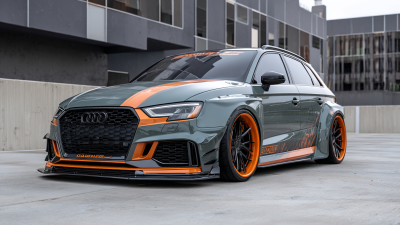
Transform Your Ride: Unique Designs of the Best Audi Body Kits for Global Buyers
-
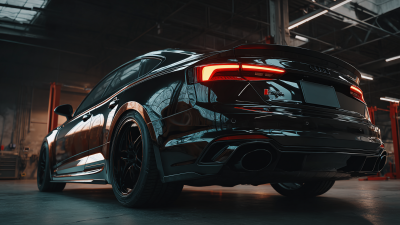
Unlocking Performance and Style: The Benefits of Upgrading to the Best Audi Rear Bumper
-
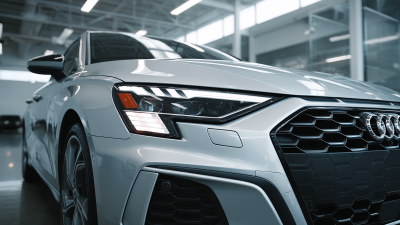
Ultimate Guide to Maximizing Audi Bumper Sales Through Targeted Marketing Strategies
-
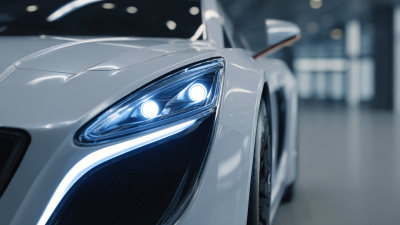
Future Innovations in Car Front Bumper Technology for 2025
-

Front Bumper Problems: Addressing Common Issues Faced by Global Buyers
-
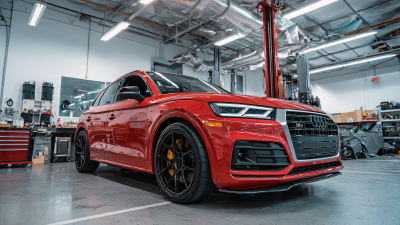
Top Strategies for Maximizing Audi Parts Quality and Performance



